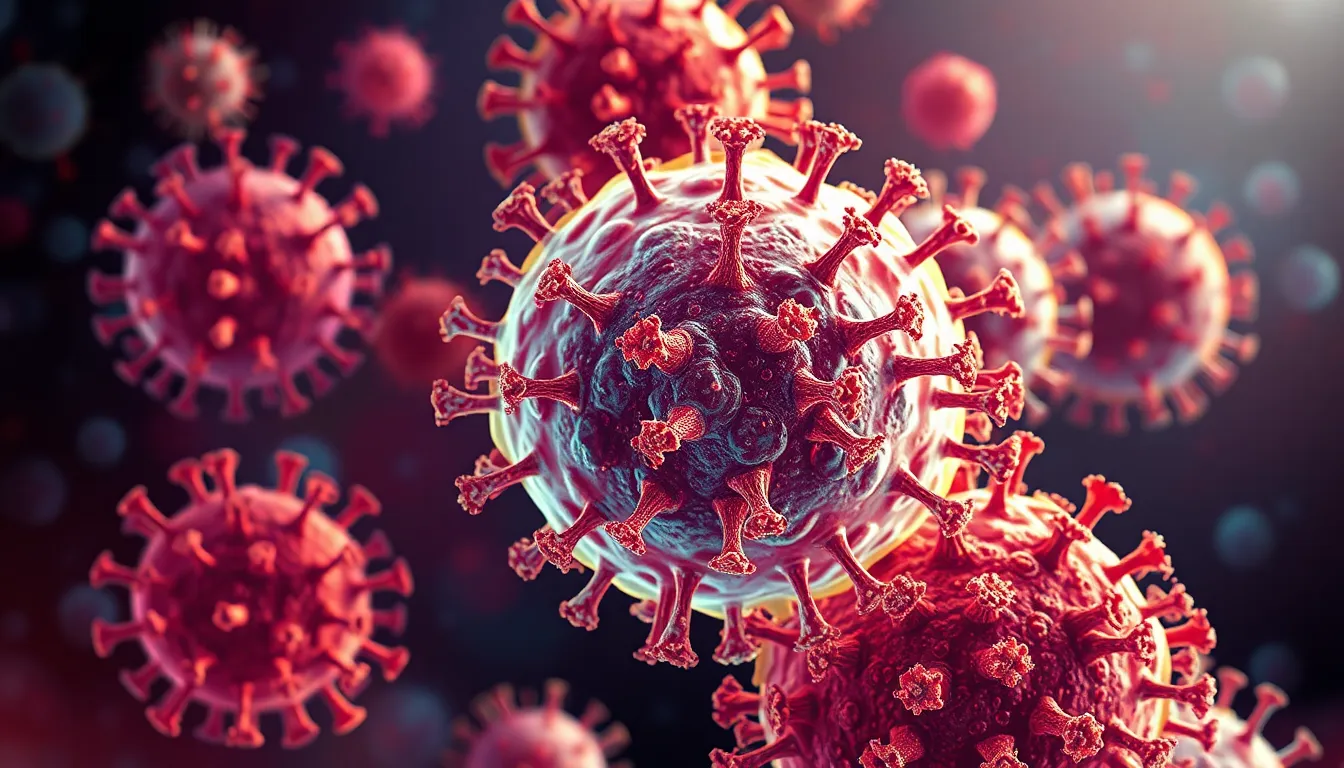The immune system is like a superhero squad, constantly on the lookout for villains trying to invade the body. But how does it develop these superpowers? Understanding immune response development isn’t just for science geeks; it’s essential for everyone who wants to stay healthy and dodge those pesky germs.
Table of Contents
ToggleOverview of Immune Response Development
Immune response development involves a series of complex biological events. This process begins with the recognition of pathogens, such as bacteria and viruses, by immune cells. Recognition occurs through pattern recognition receptors that identify specific molecular patterns unique to these invaders.
After detection, innate immune cells, including macrophages and dendritic cells, initiate an immediate response. These cells engulf pathogens and release signaling molecules called cytokines. Cytokines coordinate the immune response, enhancing inflammation and attracting additional immune cells to the site of infection.
Following the innate response, the adaptive immune system kicks in. This system relies on T cells and B cells, which are crucial for long-term immunity. T cells recognize infected cells and help coordinate the immune response. B cells produce antibodies that specifically target pathogens, neutralizing them and marking them for destruction.
Memory cells play a significant role in the effectiveness of the immune response. These cells remain in the body long after an infection has been cleared. When exposed to the same pathogen again, memory cells quickly reactivate, leading to a faster and more robust immune response.
The development of the immune response not only protects against infections but also influences vaccine effectiveness. Vaccines work by training the immune system to recognize specific pathogens without causing disease. This training ensures that the body can mount a rapid response upon future exposures.
Understanding immune response development enhances knowledge of health and disease. It underscores the significance of vaccination and immune system functions in maintaining overall well-being. Knowledge of this process supports informed health decisions and promotes a deeper appreciation for bodily defenses.
Key Components of the Immune System
The immune system consists of various components that work together to protect the body from infections and diseases. Understanding these components provides insight into how the immune response functions.
Innate Immune Response
Innate immune response serves as the body’s first line of defense. This response occurs immediately upon recognizing a pathogen. Cells like macrophages and dendritic cells play a crucial role in identifying harmful invaders through pattern recognition receptors. Cytokines released during this response help coordinate further immune activity. Phagocytosis enables these cells to engulf pathogens effectively. Additionally, antimicrobial proteins assist in neutralizing threats directly. The innate response is non-specific and acts quickly, providing immediate protection against a wide range of pathogens.
Adaptive Immune Response
Adaptive immune response develops more slowly but offers targeted long-term protection. This response relies primarily on T cells and B cells. T cells differentiate into subsets that help recognize and eliminate infected cells. B cells, on the other hand, produce antibodies tailored to specific pathogens they encounter. Upon re-exposure, memory cells enhance the speed and efficiency of the immune response. This specificity allows the body to mount a stronger defense against previously encountered pathogens. Vaccination strategies leverage this adaptive response by training the immune system to recognize specific threats without causing disease.
Stages of Immune Response Development
The immune response development occurs in distinct stages, each critical for effective defense against pathogens.
Recognition of Antigens
Immune cells identify antigens through specific receptors. Pattern recognition receptors on innate immune cells detect unique molecular structures associated with pathogens. These antigens trigger a swift response, prompting cells like macrophages and dendritic cells to engulf and break down the invaders. Engaging with antigens also initiates communication between immune cells, setting the stage for coordinated action. Understanding this recognition process is vital for designing effective vaccines that target specific antigens.
Activation of Immune Cells
The activation of immune cells marks a pivotal moment in the immune response. Following antigen recognition, innate immune cells release signaling molecules called cytokines. These cytokines recruit additional immune cells to the site of infection, enhancing the overall response. T cells, once activated, undergo expansion and differentiation into various subsets. Some T cells effectively destroy infected cells, while others assist B cells in producing antibodies. Recognizing these dynamics helps clarify how vaccines utilize these processes to engage the immune system.
Expansion and Differentiation
Expansion and differentiation follow the activation phase. Activated T and B cells rapidly increase in number, creating a robust immune army. This proliferation enables the immune system to mount a stronger response against the specific pathogen encountered. B cells differentiate into plasma cells that generate antibodies, tailored to neutralize the recognized antigen. Additionally, memory cells form during this stage, providing long-term immunity and a quicker response upon future exposure to the same pathogen. Understanding these mechanisms underscores the importance of vaccination in promoting effective, lasting immune protection.
Factors Affecting Immune Response Development
Multiple factors influence the development of the immune response. Understanding these factors is essential for grasping how the immune system operates effectively.
Genetics and Environment
Genetics determines individual immune competence by influencing the functionality of immune cells. Variations in genes, such as those coding for human leukocyte antigens (HLA), can affect the ability to recognize pathogens. Environment interacts with genetic predispositions in significant ways. Exposure to pathogens, pollutants, and lifestyle choices shapes immune development. For example, early exposure to diverse microbes can enhance immune responses, while a sterile environment may lead to immune deficiencies. Nutrition also plays a crucial role; balanced diets rich in vitamins and minerals support immune cell function and proliferation.
Vaccination and Immune Memory
Vaccination stimulates the immune system, prompting it to build a robust defense against specific pathogens. Inoculation introduces antigens that activate T and B cells, creating a tailored immune response without causing disease. After vaccination, memory cells form, providing long-lasting protection. These cells enable quicker recognition and response upon re-exposure to pathogens. Regular booster shots can reinforce this memory, ensuring effective immune protection over time. Understanding the dynamics between vaccination and immune memory highlights the importance of immunization in public health strategies.
Conclusion
A well-developed immune response is essential for maintaining health and combating infections. By understanding the intricacies of how this response unfolds individuals can make informed decisions about their health. The interplay between innate and adaptive immunity showcases the body’s remarkable ability to defend itself.
Factors like genetics and environment significantly influence immune development. Vaccination plays a pivotal role by enhancing immune memory and ensuring long-lasting protection against diseases. As public health strategies evolve it’s crucial to recognize the importance of immunization in safeguarding communities. Embracing this knowledge empowers everyone to appreciate and support their immune systems effectively.











